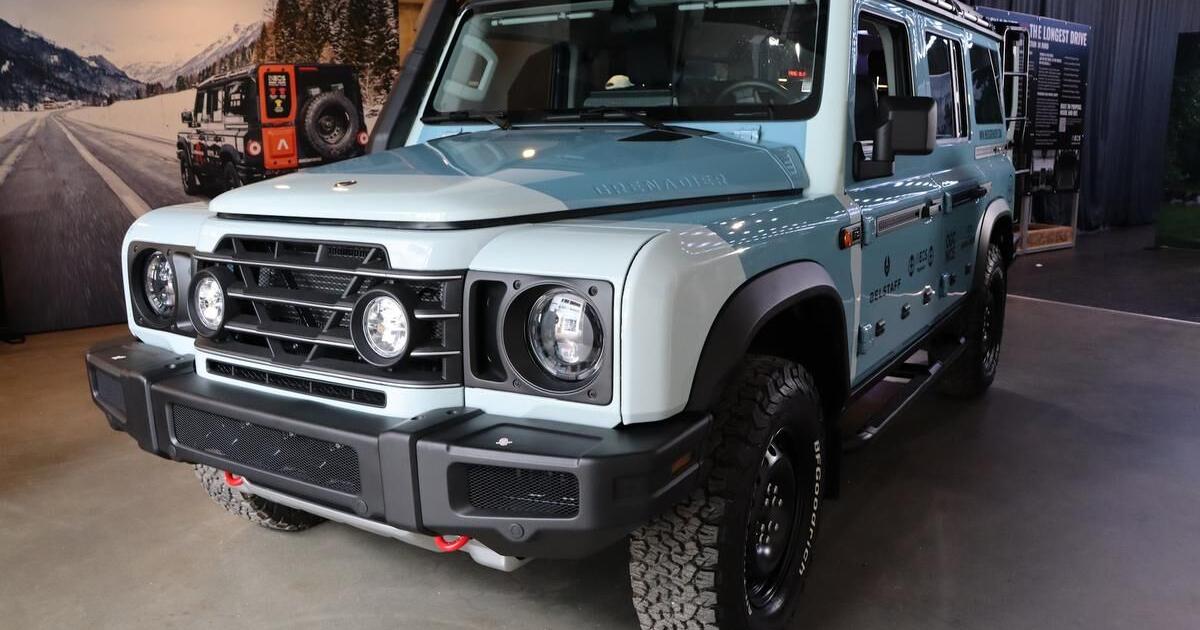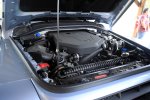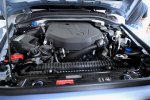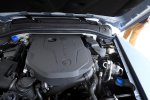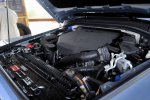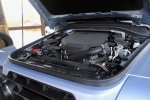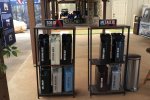SkiWill
Well-known member
@ChasingOurTrunks,
Given that the axles are made by a tractor manufacturer specifically for the IG, I doubt there will be many common off the shelf components. TMaybe there will be some commonality for wheel bearings or some typical high wear items, but axle shafts, ring and pinions, etc. expect to be IG specific. This is where Toyota really shines. I hate most Toyota interiors (LC200 excepted), think most of their seats are medieval torture devices (LC200 excepted), and don't find them to be particularly appealing in many cases (LC200 excepted), but they're clearly engineered to be easy to assemble, easy to service, with loads of common parts, and cheap to run for a very long time from a maintenance standpoint. That's why the list of cars making 200,000 miles is dominated by Toyota and some LS V8 domestic SUVs.
When I started getting excited about the IG, it was because the price was going to be more Wrangler than Land Cruiser. I could justify the cost of increased BMW specific maintenance given the huge gulf in cost of entry. That's precisely why I drive a Land Rover and not Land Cruiser currently. I do maybe ~7,000 miles (12,000 km) of trips through the year. Given the small mileage, it made more sense to me to buy a used Land Rover at half the used Land Cruiser cost and keep a healthy maintenance budget because a Land Rover indisputably is more expensive to maintain than a Toyota.
My excitement has faded with the IG because, despite my questions, and a lot of looking, I haven't been able to get ahold of the maintenance manual to see if any of my BMW concerns are valid or not with the IG version of the B58, but given BMW engine design and class action lawsuits on timing chains which have now been relocated to the back of the engine it's not a really warm fuzzy feeling. Granted the B58 could be an absolute dream. After all, the Cummins 5.9 and 6.7 inline 6 architecture has to be one of the best motors of all time, but their 5.0 V8 was a total dud with compound turbo issues, a lack of parts, less power, but at least it consumed just as much fuel. The B58 could well surprise me. All manufacturers have ups and downs.
However, having to spend thousands to replace plastic cooling parts like on my Land Rover is fine if the vehicle is $30k less than a Land Cruiser, but now it's sounding like that cost difference will be pretty small when the IG goes on sale in NA. I can do Land Rover maintenance cost if it's $30k less than a Land Cruiser for the buy in. I won't do BMW/Land Rover maintenance cost when the buy in is close to the Land Cruiser. My ideally specced New Defender is $65k. I cannot get a Land Cruiser 300 in Lexus LX600 guise for less than $95,000. The big unknown is what is the IG going to cost and what is it going to cost to maintain?
Some of the BMW problems will let you know well before catastrophic failure if you're paying attention like oil leaks, valve guides, etc. The cooling system parts can go either way as well as turbo issues. Either way, I certainly wouldn't expect any cost savings for IG parts over BMW parts. Otherwise BMW owners will just buy IG parts.
Given that the axles are made by a tractor manufacturer specifically for the IG, I doubt there will be many common off the shelf components. TMaybe there will be some commonality for wheel bearings or some typical high wear items, but axle shafts, ring and pinions, etc. expect to be IG specific. This is where Toyota really shines. I hate most Toyota interiors (LC200 excepted), think most of their seats are medieval torture devices (LC200 excepted), and don't find them to be particularly appealing in many cases (LC200 excepted), but they're clearly engineered to be easy to assemble, easy to service, with loads of common parts, and cheap to run for a very long time from a maintenance standpoint. That's why the list of cars making 200,000 miles is dominated by Toyota and some LS V8 domestic SUVs.
When I started getting excited about the IG, it was because the price was going to be more Wrangler than Land Cruiser. I could justify the cost of increased BMW specific maintenance given the huge gulf in cost of entry. That's precisely why I drive a Land Rover and not Land Cruiser currently. I do maybe ~7,000 miles (12,000 km) of trips through the year. Given the small mileage, it made more sense to me to buy a used Land Rover at half the used Land Cruiser cost and keep a healthy maintenance budget because a Land Rover indisputably is more expensive to maintain than a Toyota.
My excitement has faded with the IG because, despite my questions, and a lot of looking, I haven't been able to get ahold of the maintenance manual to see if any of my BMW concerns are valid or not with the IG version of the B58, but given BMW engine design and class action lawsuits on timing chains which have now been relocated to the back of the engine it's not a really warm fuzzy feeling. Granted the B58 could be an absolute dream. After all, the Cummins 5.9 and 6.7 inline 6 architecture has to be one of the best motors of all time, but their 5.0 V8 was a total dud with compound turbo issues, a lack of parts, less power, but at least it consumed just as much fuel. The B58 could well surprise me. All manufacturers have ups and downs.
However, having to spend thousands to replace plastic cooling parts like on my Land Rover is fine if the vehicle is $30k less than a Land Cruiser, but now it's sounding like that cost difference will be pretty small when the IG goes on sale in NA. I can do Land Rover maintenance cost if it's $30k less than a Land Cruiser for the buy in. I won't do BMW/Land Rover maintenance cost when the buy in is close to the Land Cruiser. My ideally specced New Defender is $65k. I cannot get a Land Cruiser 300 in Lexus LX600 guise for less than $95,000. The big unknown is what is the IG going to cost and what is it going to cost to maintain?
Some of the BMW problems will let you know well before catastrophic failure if you're paying attention like oil leaks, valve guides, etc. The cooling system parts can go either way as well as turbo issues. Either way, I certainly wouldn't expect any cost savings for IG parts over BMW parts. Otherwise BMW owners will just buy IG parts.

